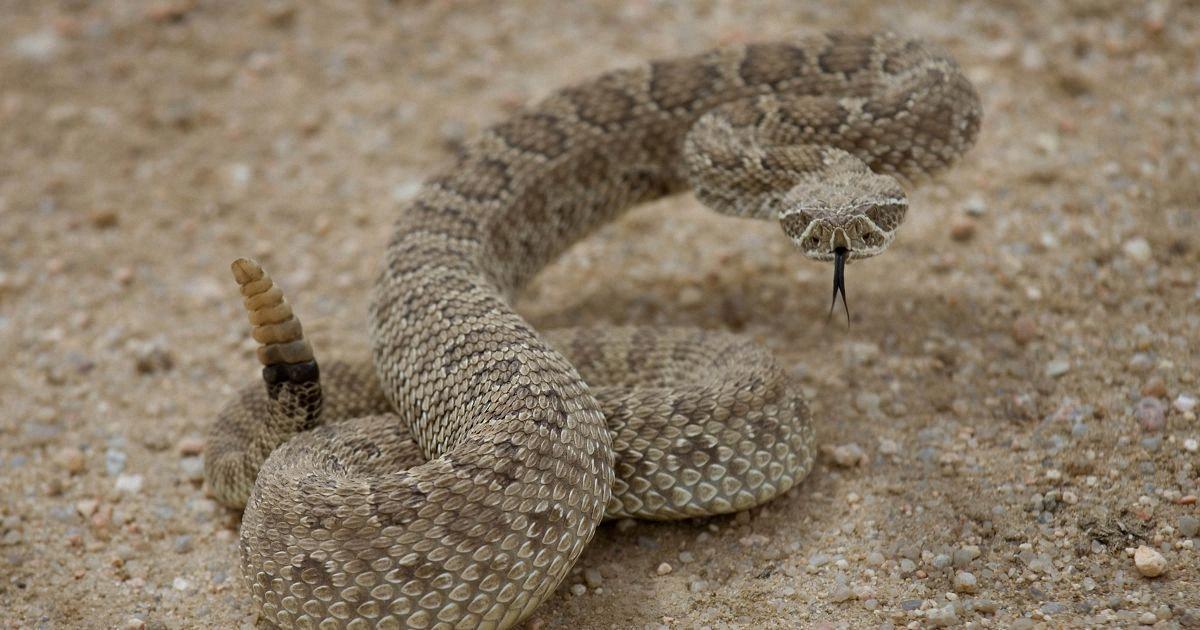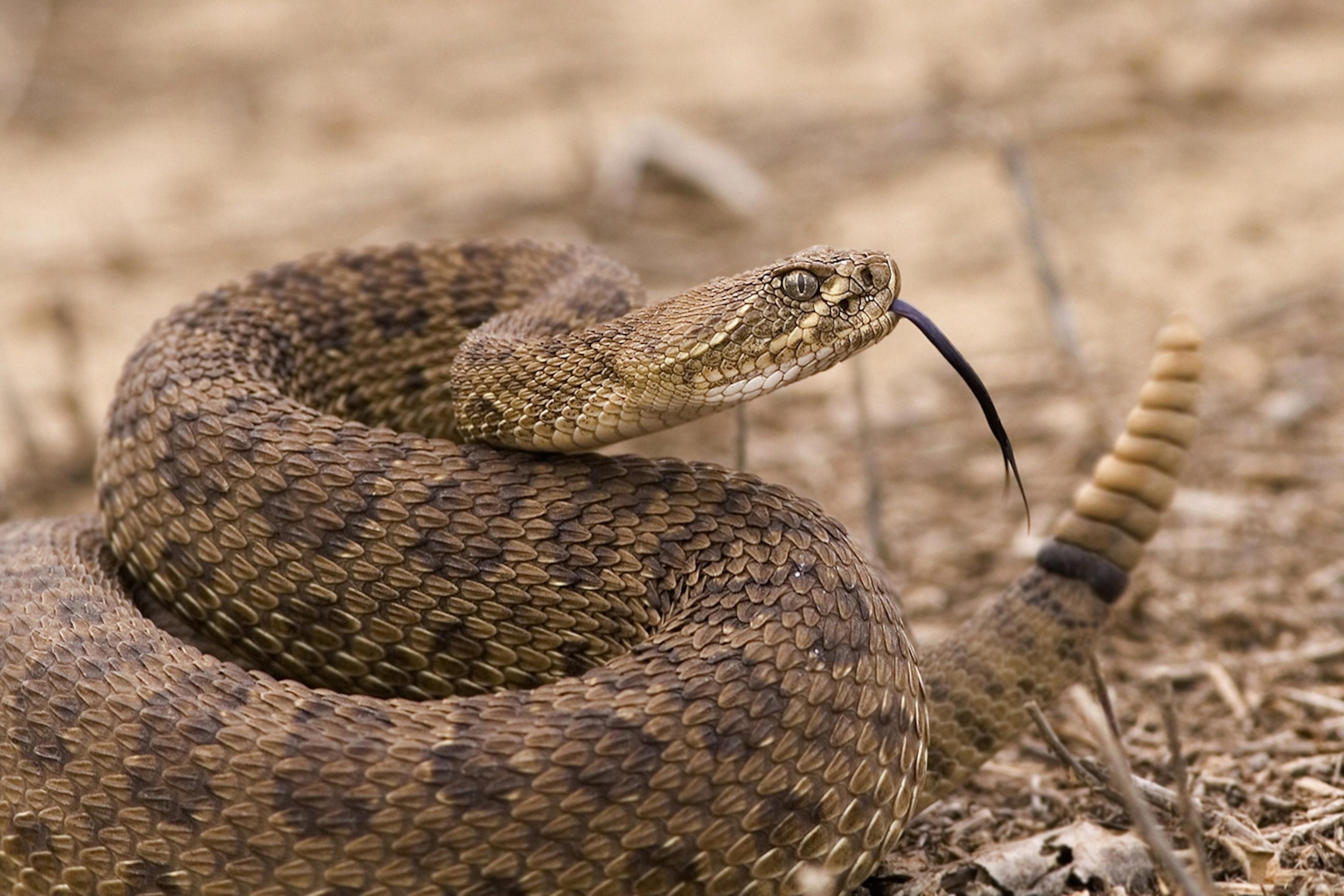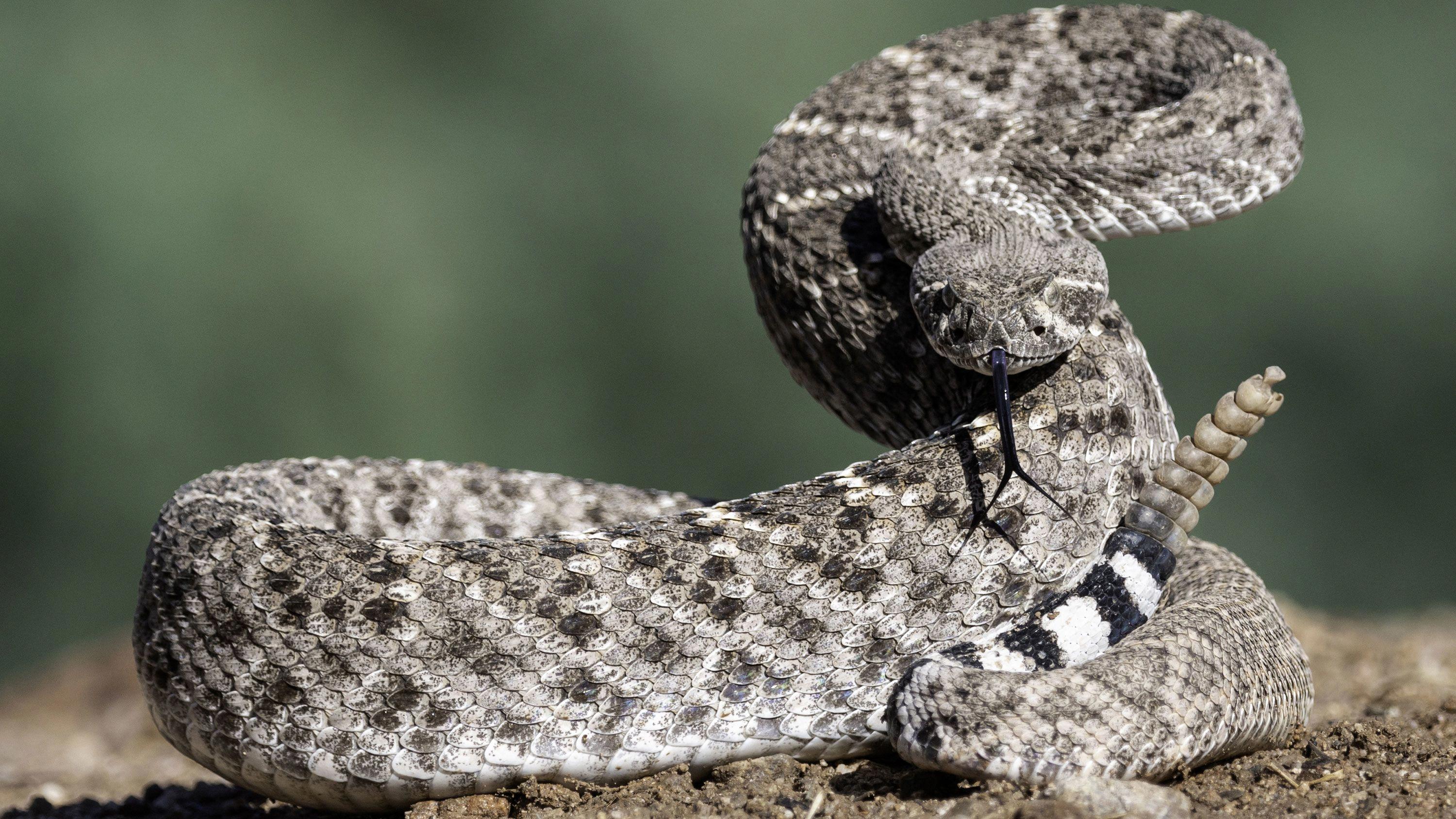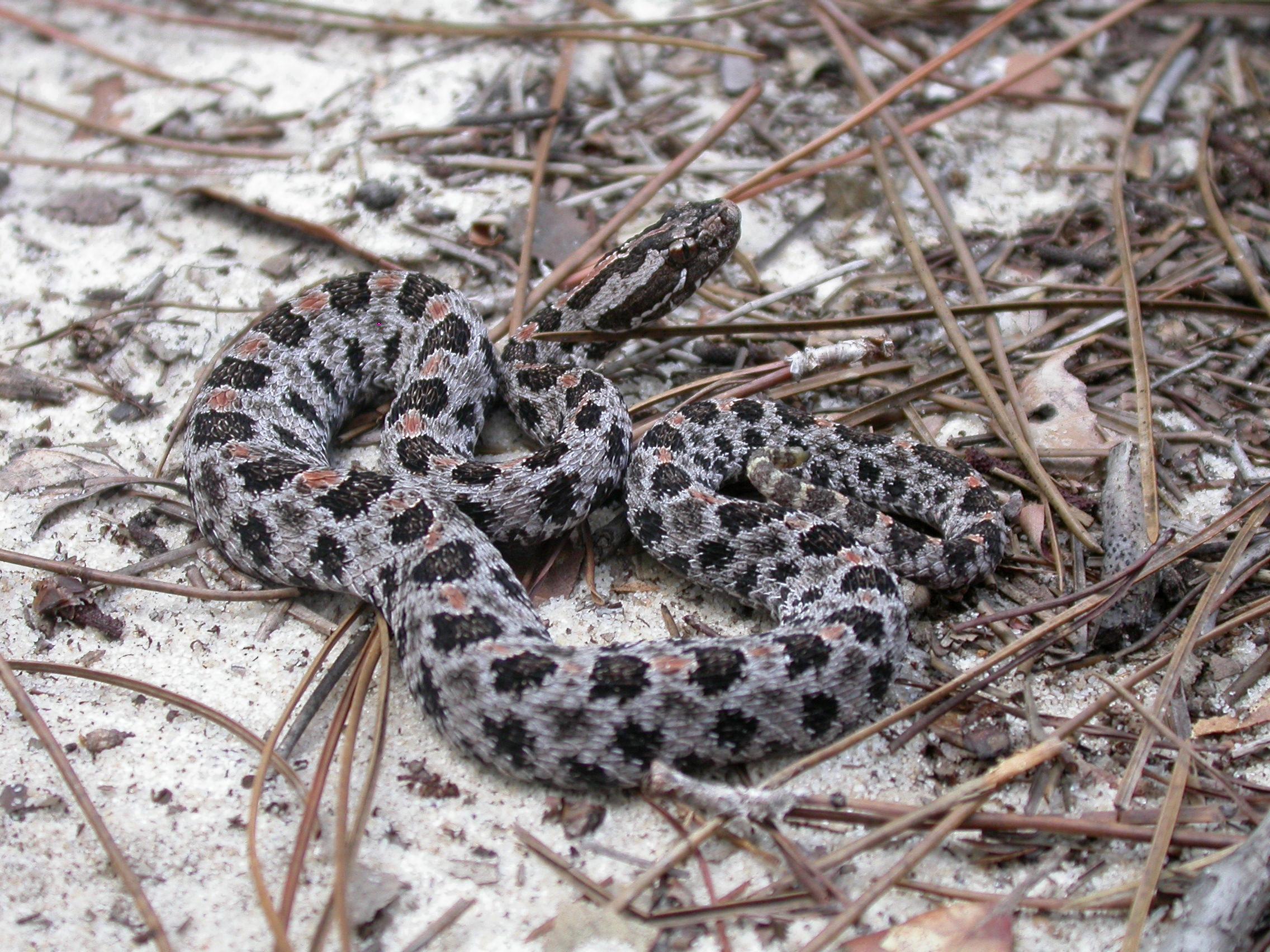Rattlesnakes are fascinating creatures that can be found in different parts of the world. They are known for their distinctive rattle, which they use as a warning signal when feeling threatened. One question that often comes up when discussing rattlesnakes is whether or not they lay eggs. In this blog post, we will explore the topic of rattlesnake reproduction and answer the question, “Do rattlesnakes lay eggs?”
Contrary to popular belief, rattlesnakes do not lay eggs. Instead, they are ovoviviparous, which means that they give birth to live young. This is a unique trait that sets them apart from most other snakes, which lay eggs.
The process of rattlesnake reproduction begins with courtship. Male rattlesnakes will often engage in combat with each other to establish dominance and secure the right to mate with a female. Once a male has successfully courted a female, mating occurs.
After mating, the female rattlesnake will carry her young inside her body until they are ready to be born. The gestation period for rattlesnakes varies depending on the species, but it generally ranges from 3 to 4 months. During this time, the developing embryos are nourished by a yolk sac.
When the babies are ready to be born, the female will find a safe and secluded spot to give birth. This usually happens in the late summer or early fall. The number of babies born in each litter can vary depending on the species and the size of the female. Generally, rattlesnakes give birth to between 8 and 15 young per pregnancy.
The newborn rattlesnakes are born fully formed and ready to survive on their own. They are usually aound 10 inches long and are immediately able to hunt and defend themselves. However, they are not able to rattle at this age, which means they are even more dangerous than adult rattlesnakes because they are more likely to bite as a form of defense.
Rattlesnakes do not lay eggs. Instead, they give birth to live young. This unique trait is just one of the many interesting things that make rattlesnakes such fascinating creatures. While they may be dangerous, they also play an important role in their ecosystem and are an important part of the natural world.
How Many Babies Can a Rattlesnake Have?
A rattlesnake can have around 8 to 10 babies at once. These babies are born inside the mother and are usually about 10 inches long when born. It is worth noting that these baby rattlesnakes are venomous from birth, but they cannot rattle like adults. Additionally, they tend to display more aggressive behavior than adult rattlesnakes. Overall, the number of babies a rattlesnake can have at once is typically within the range of 8 to 10.

Source: nature.org
When Do Baby Rattlesnakes Hatch?
Baby rattlesnakes are typically born during the late summer to early fall, specifically from August to October. This time period is known as the birthing season for rattlesnakes. During this time, female rattlesnakes give birth to live young, which are called neonates, and they are usually 4-7 inches long. It’s important to be aware of the birthing season, as encountering a small rattlesnake during this time could indicate that it is a newborn and may be more dangerous due to its inability to control the amount of venom it releases.
Where Do Rattlesnakes Give Birth?
Rattlesnakes, specifically mama rattlesnakes, give birth to their babies in shaded and damp areas across the state. Unlike some other reptiles, rattlesnakes do not lay eggs. Instead, they give birth to live young, which is a process called ovoviviparity. These areas provide a suitable environment for the babies to be born and thrive in their early stages. It is important to note that these areas can vary depending on the specific species of rattlesnake and their natural habitat, but in general, they prefer shaded and damp areas for giving birth.
Do Rattlesnakes Lay Eggs?
No, rattlesnakes do not lay eggs to have babies. Instead, they are viviparous, which means they give birth to live young. During the spring, summer, or fall, a female rattlesnake will carry her young, which are called snakelets, inside her body until they are fully developed. Typically, a rattlesnake will give birth to between 8-15 snakelets per pregnancy. Unlike some reptiles, such as turtles or crocodiles, rattlesnakes do not lay eggs to reproduce. Instead, the female rattlesnake provides all the necessary nutrients and protection for her young during their development inside her body.
Predators of Rattlesnakes
Rattlesnakes, despite being venomous and dangerous predators themselves, do have a number of natural predators in their ecosystem. Coyotes, bobcats, mountain lions, roadrunners, hawks, owls, and king snakes are among the common predators that feed on rattlesnakes. While smaller rattlesnakes can be preyed upon by a variety of animals, larger rattlesnakes are generally only vulnerable to larger predators like mountain lions and coyotes. King snakes, on the other hand, are knon to be immune to rattlesnake venom and will often actively hunt and consume them. Overall, the presence of these predators is essential to maintaining a healthy balance in the ecosystem and controlling the population of rattlesnakes.

Source: kids.nationalgeographic.com
Which State Has the Highest Population of Rattlesnakes?
The state with the highest number of rattlesnake species in the United States is Arizona, boasting a total of 13 different types of rattlesnakes. However, it is important to note that the majority of rattlesnake species are found in the American Southwest and Mexico, with only four species occurring east of the Mississippi River and two in South America.
How to Repel Rattlesnakes
Rattlesnakes are venomous and dangerous creatures that can cause serious harm if they bite you. Therefore, it is important to know how to repel them. One of the most effective ways to repel rattlesnakes is by usig natural repellents. Some of the natural repellents that can be used to repel rattlesnakes include sulfur, clove and cinnamon oil, and vinegar. These substances can be poured around the perimeter of your property, or any area where you have noticed snake activity.
Sulfur is a natural repellent that is commonly used to repel snakes. It can be found in garden centers and can be sprinkled around the areas where you want to repel snakes. Sulfur has a strong odor that snakes do not like, and it can keep them away from your property.
Clove and cinnamon oils are also effective in repelling snakes. These oils have a strong scent that snakes find unpleasant, and they can be used to create a barrier around your property. You can mix a few drops of these oils with water and spray the solution around your property to repel snakes.
Vinegar is another natural repellent that can be used to repel snakes. Snakes have a strong sense of smell, and they do not like the odor of vinegar. You can spray vinegar around the perimeter of your property to keep snakes away.
In conclusion, natural repellents such as sulfur, clove and cinnamon oil, and vinegar can be effective in repelling rattlesnakes. These substances can be used to create a barrier around your property and keep snakes away from your home and family. However, it is important to keep in mind that these natural remedies are not foolproof, and it is always best to take precautions and avoid contact with snakes whenever possible.
The Possibility of a Rattlesnake Chase
No, rattlesnakes do not chase humans. While they are venomous and their bite can be dangerous, most rattlesnakes are actually quite docile and avoid confrontations with humans whenever possible. Rattlesnakes are not aggressive animals and will only strike if they feel threatened or cornered. In fact, they will often give warnings, such as rattling their tails, to let humans know they are in the area and to encourage them to move away. It is important to alwas stay alert and aware of your surroundings when hiking or spending time outdoors in areas where rattlesnakes may be present, but it is unlikely that a rattlesnake will chase you.
Keeping Rattlesnakes Away
If you live in an area with rattlesnakes, it’s important to take precautions to keep them away from your home and yard. Here are some tips for keeping rattlesnakes away:
1. Clear your yard of clutter, debris, and food sources. Rattlesnakes are attracted to areas with lots of hiding spots and potential prey, so keeping your yard clean and tidy can make it less appealing to them. This means removing piles of wood, rocks, and other debris, as well as keeping your lawn mowed and free of tall grasses.
2. Fill any open cracks, crevices, or holes in the home’s exterior. Rattlesnakes can slip through even small openings, so it’s important to seal up any gaps in your home’s foundation or walls. This can also help keep other pests, like rodents, out of your home.
3. Set a trap or administer snake repellent. There are a variety of snake traps and repellents available on the market, but it’s important to use them carefully and according to the manufacturer’s instructions. Some traps can be harmful to other animals, while some repellents may not be effective.
4. Contact a wildlife management service for humane removal. If you do encounter a rattlesnake on your property, it’s important to stay calm and avoid approaching it. Instead, contact a professional wildlife management service to safely and humanely remove the snake. They can also provide advice on how to prevent future encounters with rattlesnakes.
By taking these steps, you can help keep your home and yard free of rattlesnakes and reduce the risk of a dangerous encounter.

Source: cnn.com
Where Do Rattlesnakes Sleep at Night?
Rattlesnakes are known to be nocturnal creatures, which means they are most active during the night. When it comes to sleeping, rattlesnakes may seek shelter under objects such as rocks, logs, or in crevices to protect themselves from predators and to regulate their body temperature. However, they may also choose to coil up near these objects or even a tree or in the open to snooze. Interestingly, it’s not easy to determine when rattlesnakes are sleeping, as they have no eyelids. Therefore, their eyes are always open, even when they are resting. This is true for all snakes, not just rattlesnakes. So, rattlesnakes can sleep in varius places, but wherever they choose to rest, they are always alert and ready to protect themselves if necessary.
The Smell of a Rattlesnake Den
According to pest control specialist and entomologist Nicholas Martin, a rattlesnake den can emit an odor that is similar to that of a cucumber. This may be due to the presence of pheromones or other chemicals that are produced by the snakes or their prey. However, it is important to note that not all rattlesnake dens will have a cucumber-like smell, and that the scent may vary depending on factors such as the size of the den and the number of snakes present. Additionally, wile the odor may be noticeable to some people, it may not be strong enough to be detected by others. As with any encounter with a venomous snake, it is important to exercise caution and seek professional assistance if necessary.
The Lifespan of Rattlesnakes
Rattlesnakes typically live for 10 to 25 years. However, it is important to note that the lifespan may vary depending on the species and the conditions in which they live. Some species of rattlesnakes are stable, while one species and one subspecies are federally listed as threatened. It is also worth mentioning that rattlesnakes are highly adaptable and can survive in a wide range of habitats, from deserts to forests. Despite their reputation as dangerous animals, rattlesnakes play a crucial role in their ecosystems by controlling rodent populations and serving as prey for larger predators.
Do Copperheads Lay Eggs?
Copperheads are a type of venomous snake found in North America. Unlike many other snake species, they are ovoviviparous, which means they give birth to their young encased in an amniotic sac rather than laying eggs. This process is similar to live birth in mammals, where the young develop inside the mother’s body until they are ready to be born. After giving birth, copperhead mothers do not provide any care for their offspring, and the young must fend for themselves from the moment they are born.

Source: outdooralabama.com
How Long Do Rattlesnakes Remain With Their Babies?
Rattlesnake babies, also known as neonates, usually stay with their mothers for a period of approximately one week to ten days. During this time, the young snakes undergo their first skin shedding process, which is a crucial developmental milestone for them. Once this process is complete, the rattlesnake babies leave their mother’s care and venture out into the world on their own, where they must learn to hunt and fend for themselves. Thus, the bonding between mother rattlesnake and her offspring is relatively brief, lasting only for the first few days of the neonates’ lives.
Do Rattlesnakes Remain With Their Eggs?
No, rattlesnakes do not stay with their eggs. Once the female rattlesnake lays her eggs, she will leave them to incubate and hatch on their own. Unlike some other reptiles, such as crocodiles, rattlesnakes do not provide any parental care to their offspring. Once the baby rattlesnakes are born, they will stay relatively close to their mother until their first shed, which occurs about a week after their birth. After their first shed, the baby rattlesnakes will go off on their own and start hunting for prey.
Conclusion
In conclusion, rattlesnakes do not lay eggs as many people believe. Instead, they give birth to live young, usually between 8-15 per pregnancy. Birthing season for rattlesnakes is typically in the late summer into early fall, and the babies are born venomous but cannot rattle. It is important to note that encountering a tiny rattlesnake during this time could mean that it is a newborn, and they are often more aggressive than adult rattlesnakes. It is crucial to exercise caution and avoid disturbing any rattlesnakes or their young. Knowing these facts aout rattlesnakes can help individuals stay safe and avoid any potentially dangerous encounters with these fascinating creatures.
